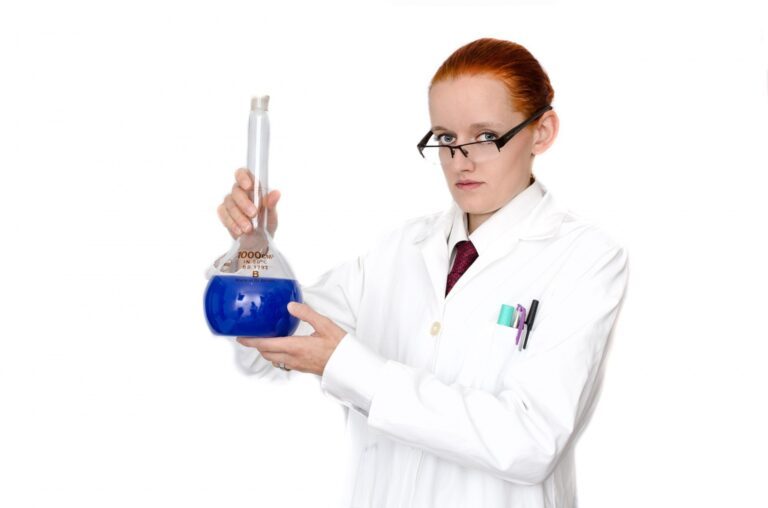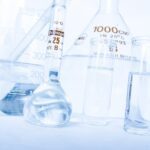The Food Industry is a complex system, and as a food scientist, it is important to have a thorough understanding of the various chemical analyses used in the industry. One of the key components of food processing is nutrient analysis, which allows quality control personnel to determine the levels of various nutrients present in food products. In particular, food scientist analyse carbohydrates, proteins and fats to ensure that food products meet label claims, are safe for consumption and comply with regulations.
Food scientist, Quality Assurance (QA) and Quality Control (QC) personnel, and other food technology professionals rely on various chemical analyses to ensure the safety, quality, and consistency of food products.
By utilizing these various types of chemical analyses, food scientist and other food industry professionals can ensure the quality and safety of their products.
Chemical analysis is a process used to measure the chemical components in food products. It involves measuring the amounts of different elements present in the food, such as proteins, carbohydrates, vitamins, minerals, and fats. Food chemists or Food scientist use various methods of chemical analysis to determine the composition of foods and to assess their quality.
Some of the most important food testing methods by a Food Scientist
1. Quality Analysis
This type of analysis evaluates the nutritional value of a food product. It looks at the nutrients that are present in the food and the levels of these nutrients. This helps to determine if a food product is of high quality and if it meets certain standards.
2. Spectroscopy
This method uses light to analyze the chemicals in food. The type of light used depends on the type of chemical being tested. For example, UV light can be used to detect sugar, while infrared light can be used to detect proteins.
3. Chromatography
This method is used to separate and identify the various components in a food sample. It can also be used to measure the concentrations of certain chemicals in a sample.
- CFSQA Certification Food Auditor: How to certify as a Food Safety & Quality AuditorCFSQA Certification Food Auditor, in today’s global food industry, food safety and quality assurance are no longer optional. With increasing regulations, frequent food recalls, and rising consumer awareness, companies are actively looking for qualified food safety and… Read more: CFSQA Certification Food Auditor: How to certify as a Food Safety & Quality Auditor
- Food traceability systems -Advanced-level RecallsFood traceability systems in Food Processing ensure confident information about the food. Before food comes to the plate Food Traceability systems surpass any loopholes in Food Safety. More information is documented throughout the food supply chain; what,… Read more: Food traceability systems -Advanced-level Recalls
- How to Secure Your Food Handler Certificate: Step-by-Step GuideA Food Handler Certificate is a document obtained after rigorous training by an individual who deals with Food. Therefore a Food Handler Certificate is obtained by a chef, mixer, packer, machine operator or cleaner in the food… Read more: How to Secure Your Food Handler Certificate: Step-by-Step Guide
- BRCGS certification for Food Industry Business – SimplifiedThe BRCGS Food Safety Standard is an essential part of the food industry today. Providing businesses with an internationally recognised audit certification for their food safety processes. However, obtaining this certification can be a daunting process for… Read more: BRCGS certification for Food Industry Business – Simplified
- Food Testing Laboratories in UAE: Quality & Safety for ConsumersIn the United Arab Emirates (UAE), a country known for its diverse culinary landscape and vibrant food industry, several top-notch food testing laboratories are dedicated to providing comprehensive testing services to safeguard public health and meet regulatory… Read more: Food Testing Laboratories in UAE: Quality & Safety for Consumers
- Which HACCP Training Certification Levels is Best for Your Career?Are you looking to advance your career in food safety? Achieving a HACCP training certification is a great way to do just that. Understanding the different levels in training HACCP certification and the advantages each provides helps… Read more: Which HACCP Training Certification Levels is Best for Your Career?
4. Mass Spectrometry
This type of analysis measures the mass of individual molecules in a sample. It is often used to determine the amount of a certain element or compound present in a sample.
5. X-ray Diffraction
This method uses X-rays to measure the structure of molecules in a sample. It can be used to determine the molecular size and shape of different elements in a sample.
6. Sensory Analysis
Sensory analysis assesses the physical characteristics of food including color, texture, taste, and aroma. This helps to ensure product consistency and quality.

By using these methods, food scientist can accurately analyze the nutritional value of food products and help ensure that they meet certain standards. In addition, these methods can be used to detect contaminants, such as pesticides and heavy metals, that may be present in foods. Chemical analysis is an essential tool for ensuring the quality and safety of food products.
Food Scientist – Common chemical analyses in the food industry
– Nutrient Analysis: Nutrient analysis determines the nutrient content of a product. This is often used to determine nutritional labelling for foods.
– Residue Analysis: Residue analysis checks for the presence of residues from pesticides, veterinary drugs, heavy metals, and other pollutants.
– Microbiological Analysis: Microbiological analysis tests for microbial contamination from bacteria, fungi, and viruses. This is essential in ensuring the safety of food products.
– Chemical Characterization: Chemical characterization involves testing for components such as antioxidants, colourants, flavourings, preservatives, and sweeteners. This can help to determine food composition and verify product labelling claims.
Here is a table outlining some common chemical and qualitative analysis methods used to determine nutrients in food:
| Nutrient | Analysis Method |
|---|---|
| Carbohydrates | High-Performance Liquid Chromatography (HPLC) |
| Reducing Sugar Analysis | |
| Dietary Fiber Analysis | |
| Proteins | Total Protein Analysis |
| Amino Acid Analysis | |
| Protein Electrophoresis | |
| Fats | Total Fat Analysis |
| Fatty Acid Composition Analysis | |
| Cholesterol Analysis | |
| Vitamins | High Performance Liquid Chromatography (HPLC) |
| UV-Visible Spectrophotometry | |
| Enzyme-Linked Immunosorbent Assay (ELISA) | |
| Minerals | Inductively Coupled Plasma (ICP) |
| Atomic Absorption Spectroscopy (AAS) | |
| Ion-Selective Electrode (ISE) | |
| X-ray Fluorescence (XRF) | |
| Indirect methods (e.g., pH, conductivity) | |
| Water | Gravimetric Analysis |
| Karl Fischer Titration | |
| Drying Method | |
| Refractometry | |
| Specific Gravity Measurement | |
| Nuclear Magnetic Resonance (NMR) |
It’s important to note that this is not an exhaustive list, and there are various other techniques and methods available depending on the specific nutrient and food matrix being analyzed. Additionally, advancements in technology and analytical methods may introduce new techniques or modify existing ones.



